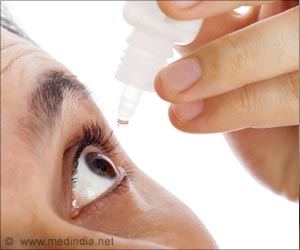Researchers from the University of Ottawa in Canada wanted to know if blood sugar regulation influences the body’s ability to dissipate heat during exercise in hot weather. Although poor blood sugar control did not appear to affect whole-body heat loss, the connection between persistently raised blood sugar (as measured by hemoglobin A1c) and higher body core temperatures and heart rate may suggest a function in thermoregulation.
Importantly, this effect did not appear to be related to the participant’s physical fitness. The findings imply that poor blood sugar control in persons with type 2 diabetes may increase the risk of dangerously high core body temperatures and increased strain on the heart during physical exertion in the heat. More research is needed, however, to validate this link and understand why these abnormalities occur even when heat loss is not affected.
Blood Sugar Control Influences Whole-Body Heat Exchange
Dr. Glen Kenny, University of Ottawa, Canada, who leads the team said, “Previous research showed ageing is associated with a decay in the body’s ability to dissipate heat, which is more pronounced in individuals with type 2 diabetes. However, it remained unclear to what extent long-term blood sugar control may mediate this response. By examining whole-body heat exchange using our one-of-a-kind whole-body air calorimeter (a device that provides a precise measurement of the heat dissipated by the human body), we were able to gain a better understanding of the association between long-term blood sugar control and the body’s physiological capacity to dissipate heat in individuals with type 2 diabetes.”
Advertisement
Regular exercise is generally recommended for managing and improving blood sugar management. Rising global temperatures and prolonged heat waves, on the other hand, make it difficult for persons with type 2 diabetes to control the disease because current health standards advise against exercising in hot weather. People with type 2 diabetes are also more likely to experience heat-related stress, which increases with age.
What is Glycated Hemoglobin
The proportion of glycated hemoglobin in the blood was measured by the researchers to monitor blood sugar control. This is hemoglobin (a protein molecule found in red blood cells that transports oxygen) with sugar molecules attached, and it represents the last three months of blood sugar control. A normal healthy glycated hemoglobin level is 4-6%, however, a decent level for a diabetic is 7%.
26 physically active men aged 43-73 years with type 2 diabetes for 5 years or more underwent an exercise heat stress test that involved cycling in a calorimeter set to 40°C. They did three 30-minute bouts of cycling, with a 15-minute rest interval in between each bout, at mild, moderate, and intense exercise intensities. Intensities were established based on a predetermined rate of metabolic heat generation related to body size, so that each participant had the same heat load and, as a result, lost the same amount of heat.
The researchers emphasize that the findings are based on a male-only group of physically active people (at least 150 minutes of exercise per week). This may not be the most heat-vulnerable group of people with type 2 diabetes. More research is needed to understand how the body’s physiological capacity to disperse heat changes when sedentary and more sensitive individuals exercise in the heat.
Dr. Glen Kenny, University of Ottawa, Canada, said, “Type 2 diabetes is associated with higher rates of heat illness and death during heat stress when compared to the general population. By defining the levels of heat stress where diabetes-related impairments in the body’s ability to lose heat cause dangerous increases in core temperature, we can provide better heat-protection advice to safeguard the health and well-being of these heat-vulnerable individuals. This includes guidance that can assist their health-care providers to manage heat stress in their patients who may be engaged in leisure, athletic activities or job-related activities in the heat.”
Source: Medindia



